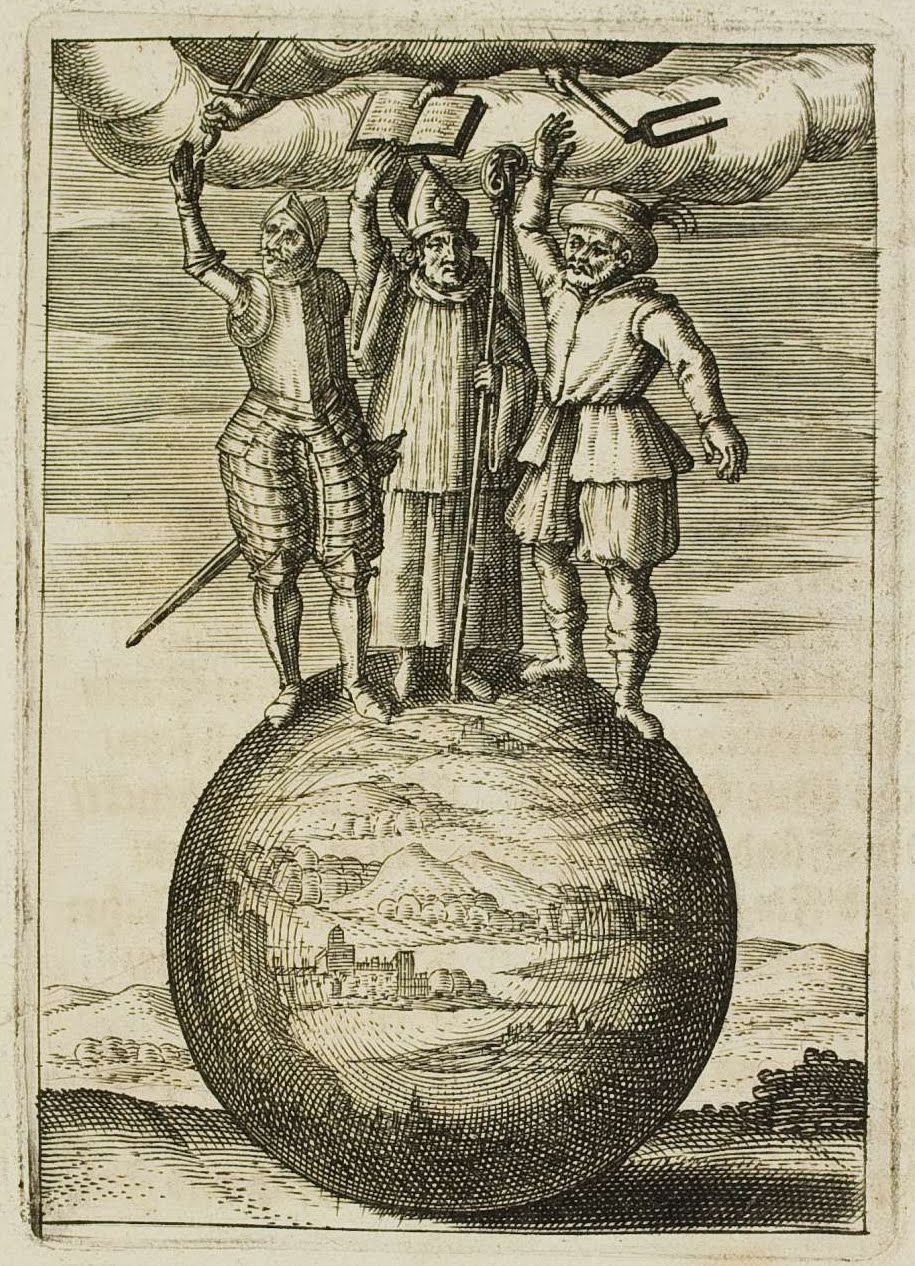First developed in the 16th century, emblems consist of three parts: a symbolic picture (pictura) with a motto or title (inscriptio) and an explanatory poem or epigram (subscriptio). Emblem books proved popular for more than two hundred years and thousands were published across Europe.
The purpose of the emblem is to indirectly convey moral, political or religious values in forms that need to be decoded by the viewer. The pictura often juxtapose ordinary objects in an enigmatic way so as to offer a reader the intellectual challenge of attempting to divine all the allegorical meanings. In this way, emblem books typified the extraordinary Renaissance and Baroque aesthetic in which objects were thought to contain hidden meanings and concealed links between apparently dissimilar objects were believed to exist. [see The Odd Baroque]
"Emblem books exercised an enormous influence on literature and the visual arts, and therefore they have long attracted the attention of scholars interested in painting, decorative arts, literature, illustrated books, iconography, symbolism, theories of representation, social and cultural history." [source]
The esoteric pictura below (from 1617) hew much closer to the symbols of alchemy than they do to the typical visual language of moral or instructional emblems. These illustrations have been cropped and if you click through, you can see the full page image, including the (German) inscriptio and subscriptio. Or right click and 'view image' to see the cropped pictura in larger format.














[click on any picture to reveal the full page image with accompanying text; or, right click and 'view image' to see an enlarged cropped illustration]
'Emblemata Nova' by Andreas Friedrich (or Friedrichen) includes a subtitle that translates approximately as:
a picture book, in which our contemporary world and its essence is painted disguisedly and explained by matching rhymes, exhorting the pious to more devotion and virtue, the evil and reckless to acknowledge the true teachings of Christianity and as a warning to them.The book was published in Frankfurt in 1617 and the engravings are thought to be by Jaques de Zettre and published by Lucas Jennis : see the second of my comments below (Thanks MrH!).
'Emblemata Nova' was recently placed online by Herzog August Bibliothek, Wolfenbüttel.
Emblem Book Projects: Glasgow; Champaign-Urbana; Penn State; U Coruña; Wolfenbüttel; Utrecht & Munich.
Previously: emblemata & alchemy. [W]
Follow along on Twitter: @BibliOdyssey.



















5 comments :
woah.they are like flash cards for the insane. i love the guy swaggering with the antlers.
as always, thank you, thank you, thank you!!!!!!!!!!
Peacay, could you please make it clearer on the RH sidebar where the links to books end, and the images that take one back to one of your posts begin? Atm it's a thin, thin grey line.
I've just introduced (yet another) friend to your blog, but it's hard to tell them/them to see where to explore via the images on the sidebar.
All the best, and keep up the great work!
Thanks!
Elmsely Rose, is it really that hard to see the changeover in sidebar images!? They are also sized differently and the BibliOdyssey post links have no mouseover text.
Alternatively, you could send your friends to the delicious links below: they remain my own favourite way to revisit/rediscover posts of yore. There is also something of a laziness gene at play too; plus, I've had in mind some modifications to the site for a while and input from elsewhere that was supposed to arrive a while ago has been delayed (cryptic am I? why yes I suppose I am).
So let's say I will bear in mind what you have suggested and if and when changes are rolled out, expect that the sidebar pics and links will be retooled and/or updated!
The esteemed MrH has kindly provided some clarifying information about the publisher/engraver of this series:
---------------------------
"While J.T. De Bry published ‘Atalanta Fugiens’ in 1617, Matthaeus Merian
(the elder) is supposed to have done the engravings for it (Merian married
into the De Bry family that same year, and eventually took over the
publishing business after J. T.’s death).
As for ‘Emblemata Nova’: its title page states ‘Aput Lvcae Iennis’ – from
the house of (i.e. published by) Lucas Jennis. Jennis was an
engraver/publisher who was also linked to the De Bry family: he was Johann
Israel De Bry’s stepson (J.I. being J.T.’s younger brother, who died in
1609). A strong candidate for the authorship of the engravings in the
‘Emblemata Nova’ is one Jakob de Zetter (aka Jacobus de Zeter, aka Jaques
de Zettre). He gets a prominent credit on the French edition of the book
‘Emblemes Nouveaux’ ([http://diglib.hab.de/wdb.php?dir=drucke/xb-6551]
apparently published by Jennis later in 1617 – the 1627 date on the
title-page notwithstanding). In his emblem-book bibliography ‘Studies in
17th Century Imagery’, Mario Praz only lists this French edition, and
attributes its engravings to de Zetter… This paper:
http://www.let.uu.nl/~els.stronks/personal/Acceptatie_van_het_vreemde.pdf
(in Dutch, but sporadically susceptible to Google-translation) also gives
de Zetter as the engraver."
Post a Comment
Comments are all moderated so don't waste your time spamming: they will never show up.
If you include ANY links that aren't pertinent to the blog post or discussion they will be deleted and a rash will break out in your underwear.
Also: please play the ball and not the person.
Note: only a member of this blog may post a comment.